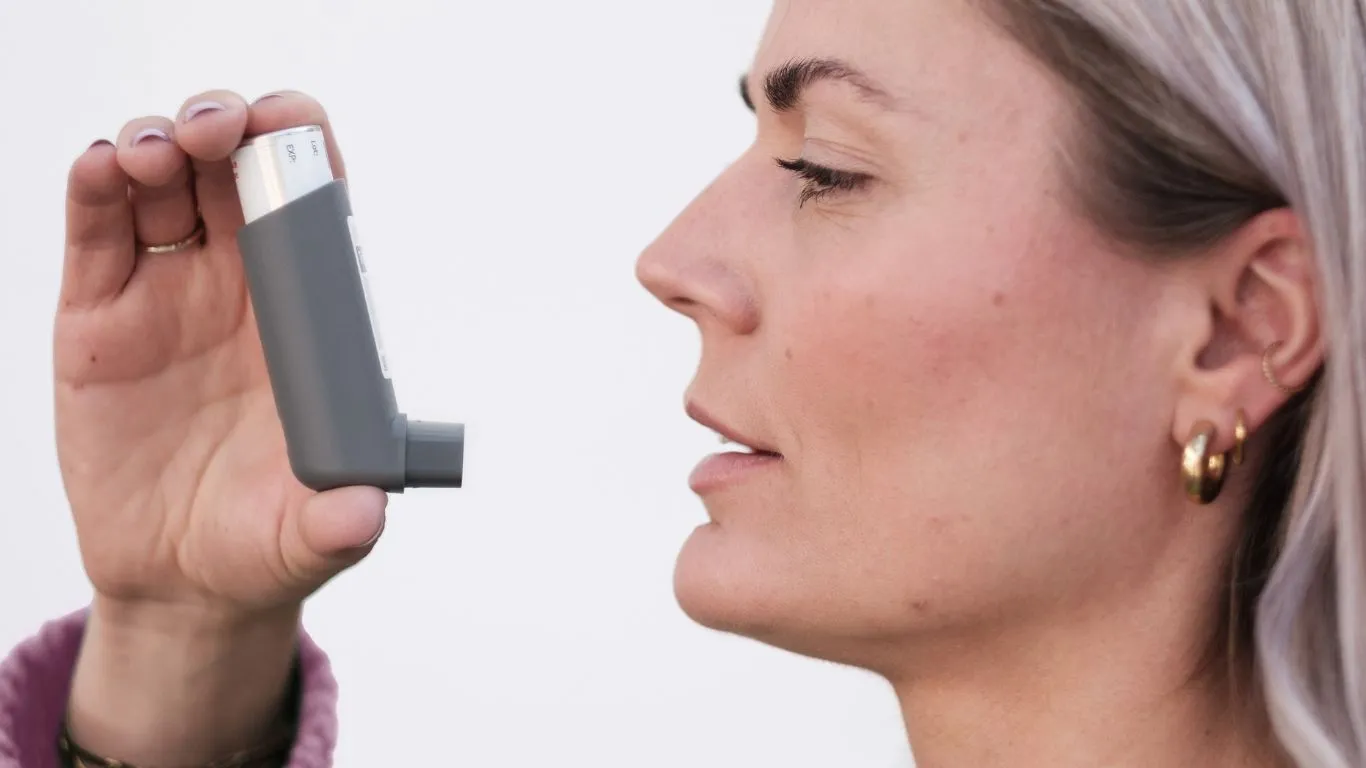How to Use an Asthma Inhaler – A Simple Guide to Getting It Right
Asthma inhalers can make a huge difference in managing your symptoms, but it’s important to use them the right way. Here’s your simple guide to using your inhaler and getting the most out of it.
If you’ve ever been prescribed an asthma inhaler, you know it’s a lifeline for managing flare-ups and staying on top of your asthma. But just having the inhaler isn’t enough – you’ve got to know how to use it properly for it to be effective. In this guide, we’re going to break down exactly how to use your asthma inhaler, the different types, and a few tips to make sure you’re doing it right every time.

Why Is It Important to Use Your Asthma Inhaler Correctly?
Using an inhaler incorrectly is a common issue, and it can seriously affect how well it works. If you don’t inhale the medication properly, it might not reach your lungs where it’s needed most. And that means you won’t get the relief you’re aiming for. That’s why knowing the right way to use it can help you manage your asthma better and reduce the risk of an attack. So, let’s dive in!

How to Use an Asthma Inhaler Step by Step
Whether you’re new to inhalers or just want to make sure you’re doing it right, here’s the step-by-step breakdown.
Step 1: Shake the Inhaler
Before using your inhaler, shake it well. This is super important, especially for metered-dose inhalers (MDIs), because the medication inside needs to be evenly mixed. Give it a good shake (about 5 seconds) to ensure the medication is properly distributed.
Step 2: Remove the Cap and Prime the Inhaler (If Needed)
If you haven’t used the inhaler in a while, or if it’s a new inhaler, you may need to prime it. To do this, spray it a couple of times into the air (away from your face) to ensure it’s working properly. If you’ve used it recently, just remove the cap and you’re good to go.
Step 3: Position the Inhaler Correctly
Hold the inhaler upright and place the mouthpiece between your lips. Make sure your teeth and tongue don’t block the opening. This positioning is crucial for the medication to travel directly into your lungs.

Step 4: Take a Deep Breath and Exhale
Before activating the inhaler, exhale fully to empty your lungs. This helps create space for the medication and allows it to work better. But don’t force it – just a normal exhale will do.
Step 5: Press Down on the Inhaler and Inhale Slowly
As you begin to inhale slowly through your mouth, press down on the inhaler to release the medication. Aim for a smooth, steady breath – don’t rush it! Continue inhaling deeply, making sure the medication gets deep into your lungs.
Step 6: Hold Your Breath
Once you’ve inhaled the medication, hold your breath for about 10 seconds (or as long as you can comfortably). This allows the medication to settle in your airways, giving it time to work.
Step 7: Exhale Slowly
After holding your breath, exhale slowly and gently through your mouth. You can use a normal exhale here, just make sure to avoid forceful breathing.
Step 8: Repeat if Needed
If your doctor has prescribed more than one puff, wait about 30 seconds to a minute between puffs. Shake the inhaler again and repeat the steps above. Always follow the prescribed dosage!
Step 9: Rinse Your Mouth (If Using a Steroid Inhaler)
If you’re using a steroid inhaler, it’s a good idea to rinse your mouth after each use. Steroid inhalers can cause oral thrush or irritation if the medication stays in your mouth or throat, so rinsing helps prevent that.
Common Types of Asthma Inhalers
There are a few different types of inhalers, and the way you use them can vary slightly. Let’s go over the main ones:
1. Metered-Dose Inhaler (MDI)
The metered-dose inhaler is the most common type. It uses a propellant to deliver the medication in a fine mist. These inhalers need to be shaken before use, and they’re typically used for quick relief or maintenance treatment.
2. Dry Powder Inhaler (DPI)
A dry powder inhaler doesn’t use a propellant. Instead, you need to inhale sharply and deeply to get the medication into your lungs. With DPIs, you don’t need to shake them, but you do need to ensure you’re inhaling fast and deep enough.
3. Soft Mist Inhaler (SMI)
A soft mist inhaler releases a slow-moving mist of medication, making it easier to inhale. It’s less likely to cause medication to be lost in the air. This type of inhaler doesn’t require a fast, deep breath like a DPI.
Tips for Using Your Inhaler Effectively
Using your inhaler the right way is important, but there are a few extra things you can do to make sure it works even better:
- Practice with a Spacer: A spacer or holding chamber is a device that attaches to your inhaler and helps deliver the medication more effectively. It makes it easier to inhale and can help ensure you get the full dose.
- Track Your Dosage: Keep a record of when and how often you use your inhaler. This can help you stay on track with your asthma management and avoid running out of medication unexpectedly.
- Know When to Use Your Inhaler: If you have a rescue inhaler, it’s usually meant for quick relief during an asthma attack. A controller inhaler is used daily to manage symptoms and prevent flare-ups, even when you feel fine.
Conclusion
Knowing how to use your asthma inhaler correctly can make a huge difference in how well you manage your asthma symptoms. By following these simple steps and tips, you can make sure you’re getting the most out of your medication. Whether you’re using a metered-dose inhaler, dry powder inhaler, or soft mist inhaler, the key is consistency and technique. Don’t forget to speak with your doctor if you’re having trouble or if your inhaler doesn’t seem to be working the way it should.
Appendices
Frequently Asked Questions
- How often should I use my inhaler? It depends on your doctor’s instructions. Some inhalers are for daily use, while others are only used when symptoms arise. Be sure to follow your prescription.
- Can I use my inhaler if I’m not having symptoms? Yes! If you’re prescribed a controller inhaler, you should use it daily, even if you’re feeling fine. It helps prevent flare-ups.
- What happens if I use my inhaler incorrectly? If you’re not using your inhaler properly, you might not get the full dose of medication, which could lead to poor asthma control. Try practicing the technique, and ask your doctor for advice if you’re unsure.
- Can I use a spacer with my inhaler? Yes, spacers are helpful, especially with metered-dose inhalers. They allow the medication to reach your lungs more effectively.
- What should I do if I run out of medication? Contact your doctor to get a refill. Never go without your inhaler, especially if you’re relying on it for asthma control.
References
- American Lung Association (2024). Inhaler Use and Asthma Management. Read Article
- National Institutes of Health (2023). Asthma Treatment and Medication Guidelines. Read Article
- Centers for Disease Control and Prevention (2024). Asthma Inhaler Usage: Tips and Best Practices. Read Article
Disclaimer: The information provided in this article is for educational purposes only and does not substitute for professional medical advice. Always consult with your doctor or healthcare provider for personalized asthma management and treatment.














